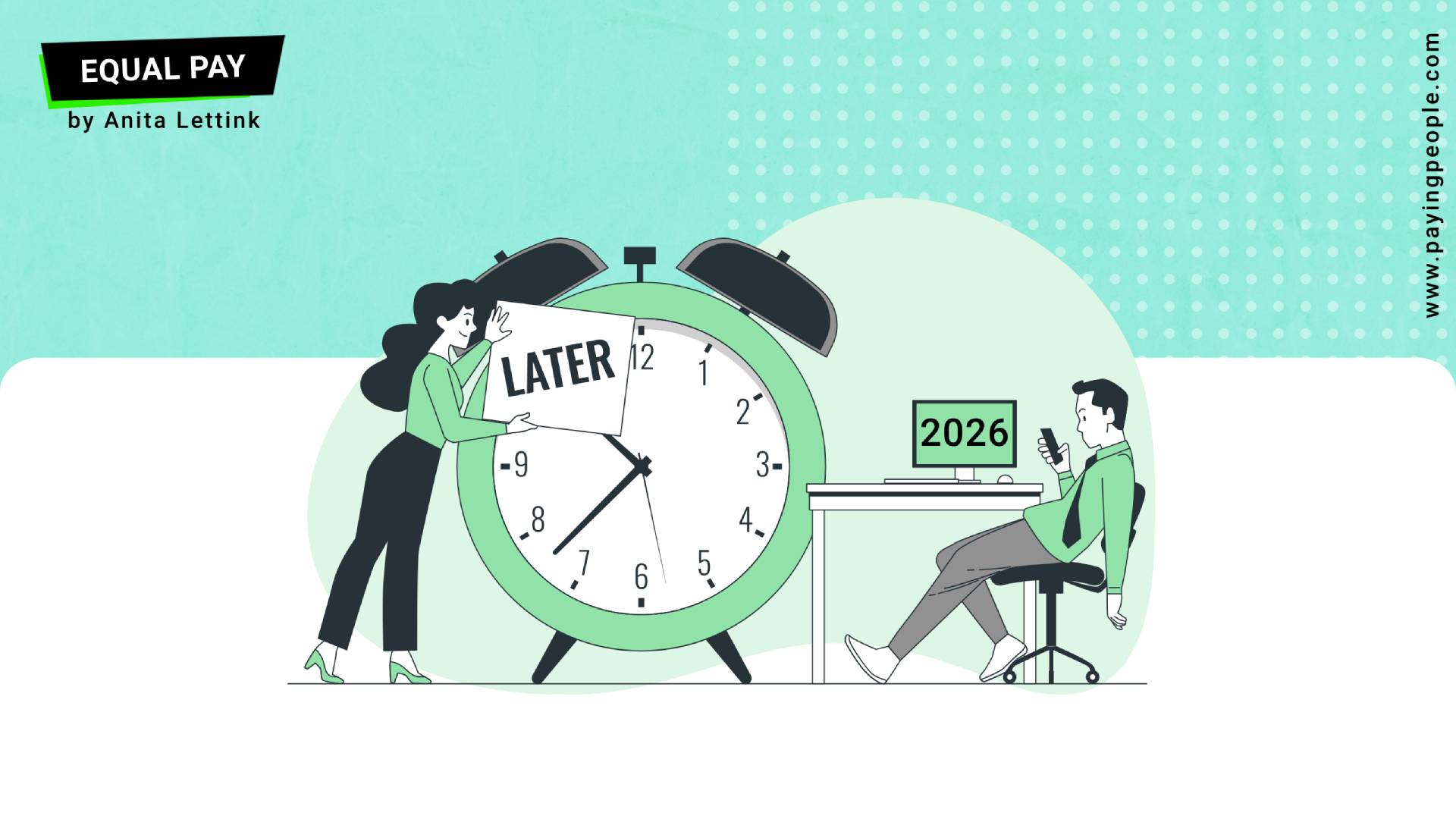Pay Transparency: Should You Wait Until 2026?
The European Pay Transparency Directive’s transposition deadline is set for June 2026 and the first reporting due in June 2027. Only 5 countries have delivered the draft national legislation. Most haven’t shared their draft national law yet. If you’re operating in one of these countries, you could be tempted to wait. But is that really the smartest strategy? Let’s explore the hidden risks and opportunities in this critical timeline.
Reporting is only due in June 2027. Why can’t I just wait until the local legislation is released?
It’s tempting to wait isn’t it? But waiting creates several significant risks. First, implementing pay transparency typically uncovers issues that take time and money to fix. If you wait until 2026, you’ll be trying to analyze jobs, develop salary ranges, discover pay gaps, and correct inequities all while rushing to meet compliance deadlines. Companies that start now can make incremental adjustments to their budget rather than facing potentially large, unplanned pay corrections in a single fiscal year. Plus, the talent market is already shifting toward transparency expectations, regardless of legal deadlines. Why let competitors who move earlier and show pay ranges in ads attract the best talent?
What do early adopters of pay transparency gain over companies that wait until the deadline?
Transparency is a trend that goes beyond pay. It’s becoming the norm. People demand it, and you are a less attractive employer if you aren’t transparent about pay, compensation and career development. Early adopters are seeing some compelling benefits! They’re attracting more qualified and diverse applicants, with some reporting 20-30% increases in qualified application rates for positions with transparent salary ranges. They’re also experiencing faster hiring processes. Candidates self-select based on pay information, and that translates into reduced time spent interviewing candidates with mismatched expectations. But perhaps most importantly, early adopters have time to thoughtfully develop their narrative around any pay gaps they discover, rather than being forced into reactive explanations when the reporting deadline hits. This proactive approach builds trust with both employees and the public. And I don’t have to tell you how important trust is these days.
If I decide to implement pay transparency now, which elements of the Directive should I prioritize first?
Start with the foundation: a comprehensive pay equity analysis. This isn’t just about gender, you want to look at your compensation data and identify unexplained pay differences across all protected characteristics (e.g. age, cultural background, disability). Next, develop clear compensation frameworks with defined ranges for each role in your job architecture. These two steps alone often take 6-12 months to implement properly. Then gradually introduce transparency practices: share ranges internally, remove pay secrecy clauses from contracts, and begin including salary information in job postings. This phased approach allows you to control the narrative and address issues before they become public requirements. The reporting mechanisms can come later as the specific national requirements become clearer.
We operate in multiple European countries. Should we implement one standardized approach or tailor our strategy by country?
This is where things get interesting! While the Directive establishes minimum standards, each country’s implementation may vary in specific requirements and timelines. I’d recommend developing a core transparency framework that meets the Directive’s baseline requirements, then planning for country-specific adaptations as national laws emerge. From the five drafts I’ve seen so far, it’s obvious that each country uses the opportunity to add a bit of local flavor, but not much. The foundation is to define job levels, include salary ranges, share consistent criteria for determining pay, and establish systems for tracking and reporting gender pay information. This hybrid approach gives you flexibility while ensuring compliance across operations.
What unexpected challenges do companies face when implementing pay transparency, and how can I avoid them?
The most important challenge is the emotional response from employees who suddenly realize they’ve been underpaid for years! This creates a complex ripple effect of compensation adjustments and a potential for dissatisfaction. Another common issue is discovering that your HR systems aren’t designed to track and analyze the data required for transparency. Many companies have also struggled with creating consistent job architectures across different countries with varying market rates. To avoid these pitfalls, start with leadership awareness, education and buy-in, invest in proper data infrastructure early, and develop compensation philosophies that can flex across regions while maintaining internal equity. These challenges take time to navigate: time you won’t have if you wait until 2026.
I’m concerned about the cost of implementing pay transparency now versus waiting.
Think of it as the difference between preventive maintenance and emergency repairs. The upfront investment in pay analysis, potential adjustments, and communication strategies might seem significant. But companies that wait often face much higher costs: rushed consultancy fees, emergency salary adjustments, potential legal challenges, and the incalculable cost of losing talent trust if significant inequities are suddenly exposed. In addition, if you have pay gaps, they grow larger with each salary round. Early adopters can spread adjustment costs across multiple budget cycles and gain employee goodwill in the process. Plus, they avoid the premium pricing that will inevitably come when every company in Europe simultaneously seeks help meeting the 2026 deadline. In this case, the best move is actually to start sooner rather than later.

